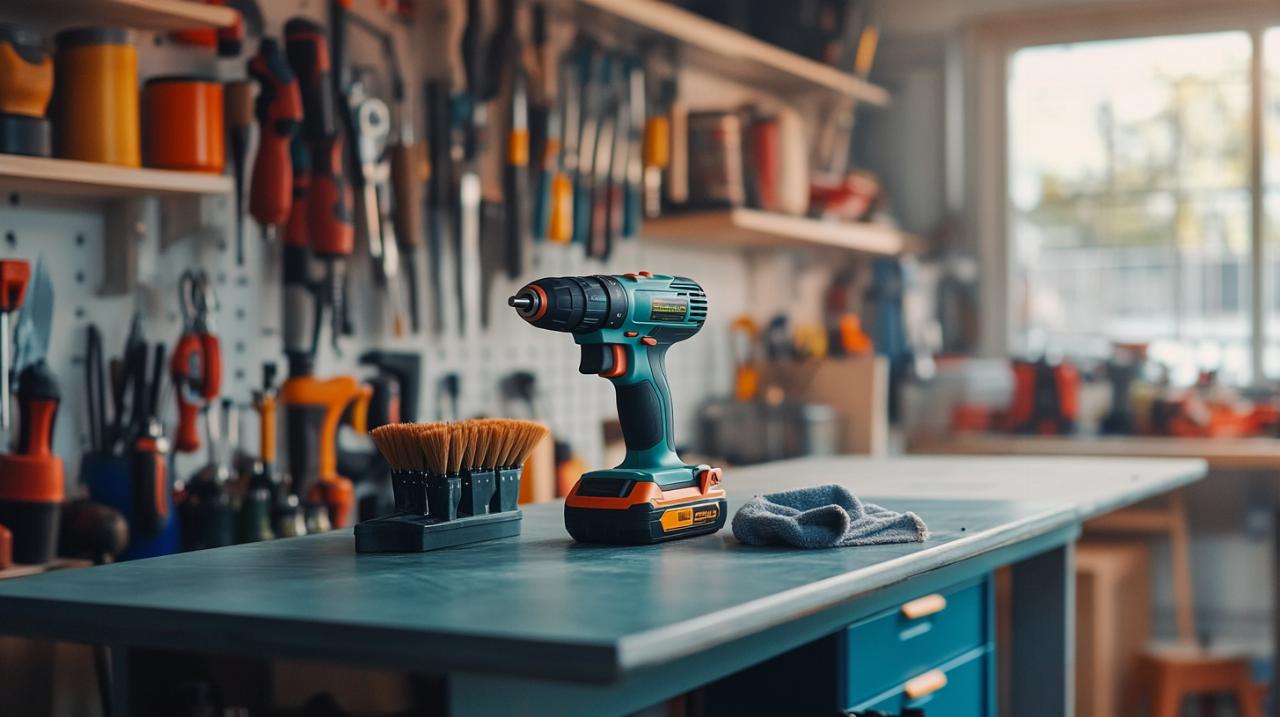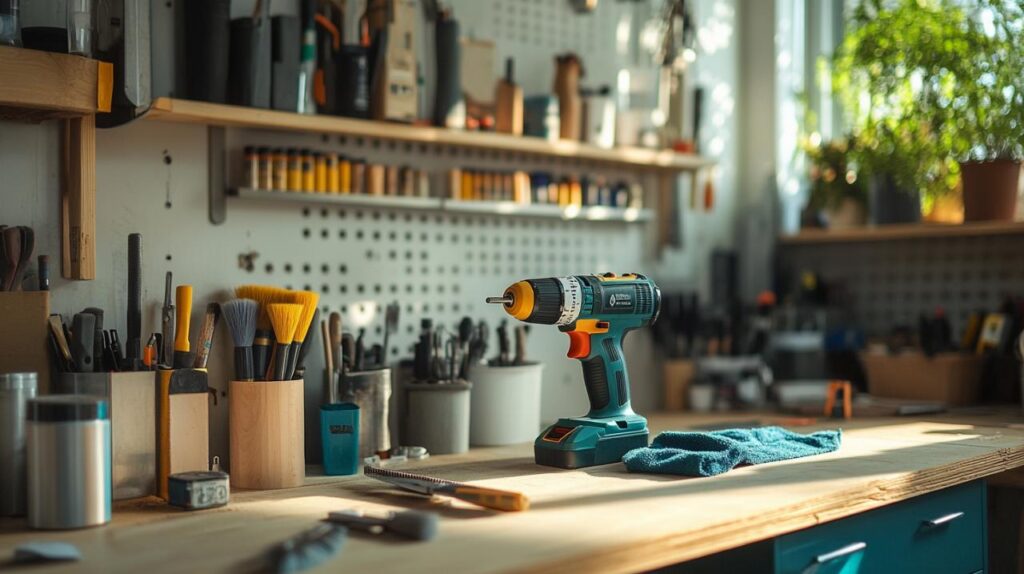Cordless drills have become indispensable companions for anyone who takes on DIY projects or works professionally in construction and installation. Their portability and versatility make them ideal for a wide range of tasks, from assembling furniture to drilling through concrete. However, to ensure your tool remains reliable and performs at its best over the years, adopting a consistent maintenance routine is essential. With lithium-ion batteries enabling cordless operation and advanced features such as percussion mode and adjustable clutches, modern drills require thoughtful care to maximise their lifespan and efficiency.
Cleaning and storage best practices
Regular cleaning routine after each use
Keeping your cordless drill clean is one of the simplest yet most effective steps you can take to prolong its working life. After each use, especially following tasks that involve drilling through concrete or plaster, it is important to give your tool a thorough wipe down. Dust, debris, and gunk can accumulate on the exterior and within the ventilation slots, which may lead to overheating or reduced performance over time. A soft, dry cloth is usually sufficient for removing surface dirt, while a small brush can help clear away particles lodged in crevices. Pay particular attention to the chuck, as this component can gather residue that affects its grip on drill bits. Regularly cleaning the ventilation slots ensures that air can flow freely, preventing the motor from becoming too hot during prolonged use. This simple habit not only keeps your drill looking smart but also protects its internal mechanisms from unnecessary wear.
Proper storage solutions to protect your drill
Once your drill is clean, storing it correctly is the next crucial step. A cool, dry spot away from direct sunlight and moisture is ideal, as extreme temperatures and humidity can damage both the tool and its battery. Whenever possible, keep your cordless drill in its original case, which provides extra protection against knocks, dust, and environmental factors. If the case is not available, consider investing in a dedicated tool storage box or organiser that keeps the drill secure and prevents it from being accidentally damaged. Storing drill bits in an organiser case and applying anti-corrosive oil to steel bits helps maintain their sharpness and prevents rust. Keeping the storage area at a controlled temperature, ideally between fifteen and twenty-five degrees Celsius, with humidity levels around thirty to fifty percent, further safeguards your equipment. By treating your drill with care when it is not in use, you reduce the risk of wear and ensure it is always ready for the next job.
Battery care and maintenance
Optimal charging habits for longevity
The battery is the heart of any cordless drill, and how you charge and manage it has a significant impact on the tool’s overall performance. Lithium-ion batteries, which are standard in modern cordless drills, prefer to be charged regularly rather than allowed to run completely flat. It is best to recharge the battery when it drops to around twenty to thirty percent capacity, rather than waiting until it is entirely depleted. This practice helps to preserve the battery’s health and extend its lifespan. Occasionally performing a full charge cycle, where the battery is allowed to discharge more fully before being recharged to one hundred percent, can also help recalibrate the battery’s internal monitoring system. Avoid leaving the battery on the charger for extended periods once it has reached full charge, as this can lead to overheating and reduced capacity over time. Always use the charger supplied with your drill or a compatible replacement recommended by the manufacturer, as using incorrect chargers can damage the battery and void your warranty.
Storage guidelines for cordless drill batteries
When your drill is not being used for an extended period, proper battery storage becomes even more important. Batteries should be stored with a partial charge, typically around forty to sixty percent, rather than fully charged or completely flat. Storing a battery at full charge for long periods can degrade its cells, while leaving it empty can cause it to enter a deep discharge state from which it may not recover. Keep the battery in a cool, dry place, away from direct heat sources and moisture. If you have spare batteries, rotating them regularly ensures that each one is used and recharged periodically, which helps maintain their overall health. Checking the battery connection and ensuring the contacts are clean and free from corrosion also contributes to reliable performance. By following these storage guidelines, you can ensure that your batteries remain in excellent condition and ready to deliver consistent power whenever you need them.
Routine inspections and settings
Checking for Loose Components and Worn Cables
Regular inspections are a vital part of keeping your cordless drill in top working order. Before each use, take a moment to check for any loose screws or components that may have come undone during previous tasks. Vibrations and the natural stresses of drilling can cause parts to loosen over time, and tightening them promptly prevents further damage or safety issues. Inspect the cables and connections, particularly if your drill has a removable battery pack, to ensure there is no visible wear, fraying, or corrosion. Even though cordless drills rely on batteries rather than mains power, the internal wiring and connections are still susceptible to wear. If you notice any abnormal vibrations, metallic noises, or a loss of power, it may be a sign that internal components need attention. Addressing these issues early can prevent more serious problems down the line and keep your drill operating smoothly and safely.
Selecting appropriate speed and torque settings
One of the best drills maintenance tips is to always select the correct speed and torque settings for the material you are working with. Modern cordless drills come equipped with variable speeds and adjustable torque settings, allowing you to tailor the tool’s performance to the task at hand. For example, drilling through wood typically requires higher speeds, up to around two thousand revolutions per minute, while working with metal calls for slower speeds, usually between five hundred and one thousand revolutions per minute. When drilling into concrete or stone, a percussion mode combined with a torque setting above fifty Newton metres is recommended. Using the appropriate settings not only makes your work more efficient but also prevents unnecessary strain on the motor and mechanical components. Adjustable clutches help protect delicate surfaces by disengaging the motor once a certain resistance is reached, reducing the risk of damage to both the material and the drill. Taking the time to adjust these settings before starting a job is a simple yet effective way to extend the life of your tool.
Drill bits and usage techniques
Maintaining sharp and clean drill bits
The condition of your drill bits has a direct impact on the quality of your work and the health of your drill. Dull or dirty bits require more effort from the motor, which can lead to overheating and premature wear. After each use, wipe down your drill bits to remove any debris, and inspect them for signs of damage such as chips, cracks, or excessive wear. Steel bits benefit from a light coating of anti-corrosive oil, which prevents rust and keeps them in good condition. Storing drill bits in an organised case not only protects them but also makes it easier to find the right bit for each task. Sharpening bits regularly ensures efficient drilling and reduces the strain on your drill. If you frequently work with tough materials such as concrete or metal, investing in high-quality bits designed for these applications can make a noticeable difference in both performance and longevity. Keeping your bits in top shape is a straightforward maintenance task that pays dividends in the quality of your results and the lifespan of your drill.
Proper drilling pressure and motor protection
How you use your drill is just as important as how you maintain it. One common mistake is applying too much pressure while drilling, which can damage the motor or the material you are working with. The drill should do most of the work, with you providing steady, gentle guidance rather than forcing it through the material. Excessive pressure generates additional heat and places unnecessary stress on the motor and gearbox, leading to faster wear and potential breakdowns. If you find that the drill is struggling to make progress, it may be a sign that the bit is dull or that you need to adjust the speed or torque settings. Allowing the drill to work at its own pace not only protects the tool but also produces cleaner, more precise holes. For tasks that require sustained drilling, such as working with concrete or installing multiple fixtures, take regular breaks to allow the motor to cool down. This prevents overheating and extends the operational life of your drill. By adopting proper drilling techniques and being mindful of the tool’s limits, you can maintain peak performance and avoid costly repairs.
Professional servicing and long-term care
When to consider professional maintenance
Even with diligent home maintenance, there are times when professional servicing is necessary to keep your cordless drill in optimal condition. Signs that your drill may need expert attention include a noticeable loss of power, abnormal vibrations, overheating, or unusual metallic noises during operation. In brushed models, visible sparks can indicate that the carbon brushes need replacing, while erratic electronic control in brushless models may point to issues with the motor or control circuitry. If your battery is losing more than thirty percent of its original capacity or if it fails to hold a charge despite proper care, it may be time to have it professionally assessed or replaced. Attempting to repair complex internal components yourself can be risky and may void your warranty, so it is often best to consult a qualified technician. Many reputable brands and suppliers, such as ToolStore UK, offer servicing options and can provide genuine replacement parts that ensure your drill continues to perform reliably. Regular professional servicing, combined with your own maintenance efforts, helps identify potential problems before they escalate and keeps your tool running smoothly for years to come.

Benefits of regular professional servicing
Scheduling periodic professional servicing offers numerous benefits beyond simply fixing problems as they arise. A trained technician can perform a thorough inspection of your drill, checking for wear on internal components that may not be visible during routine home maintenance. They can lubricate mechanical clutches, clean internal parts, and replace worn elements such as carbon brushes before they cause further damage. Professional servicing also provides an opportunity to have your batteries tested and, if necessary, recalibrated or replaced with original or certified parts that meet the manufacturer’s specifications. This proactive approach not only extends the lifespan of your drill but also enhances its safety and reliability. Regular maintenance ensures that your tool remains in tip-top condition, ready to tackle any project with confidence. For professionals who rely on their equipment daily, investing in regular servicing can prevent costly downtime and protect their livelihood. Even for home users, the peace of mind that comes from knowing your drill is well maintained and safe to use is invaluable. By combining your own diligent care with expert servicing, you can enjoy the full benefits of your cordless drill for many years, making it a sound investment in your toolkit.

